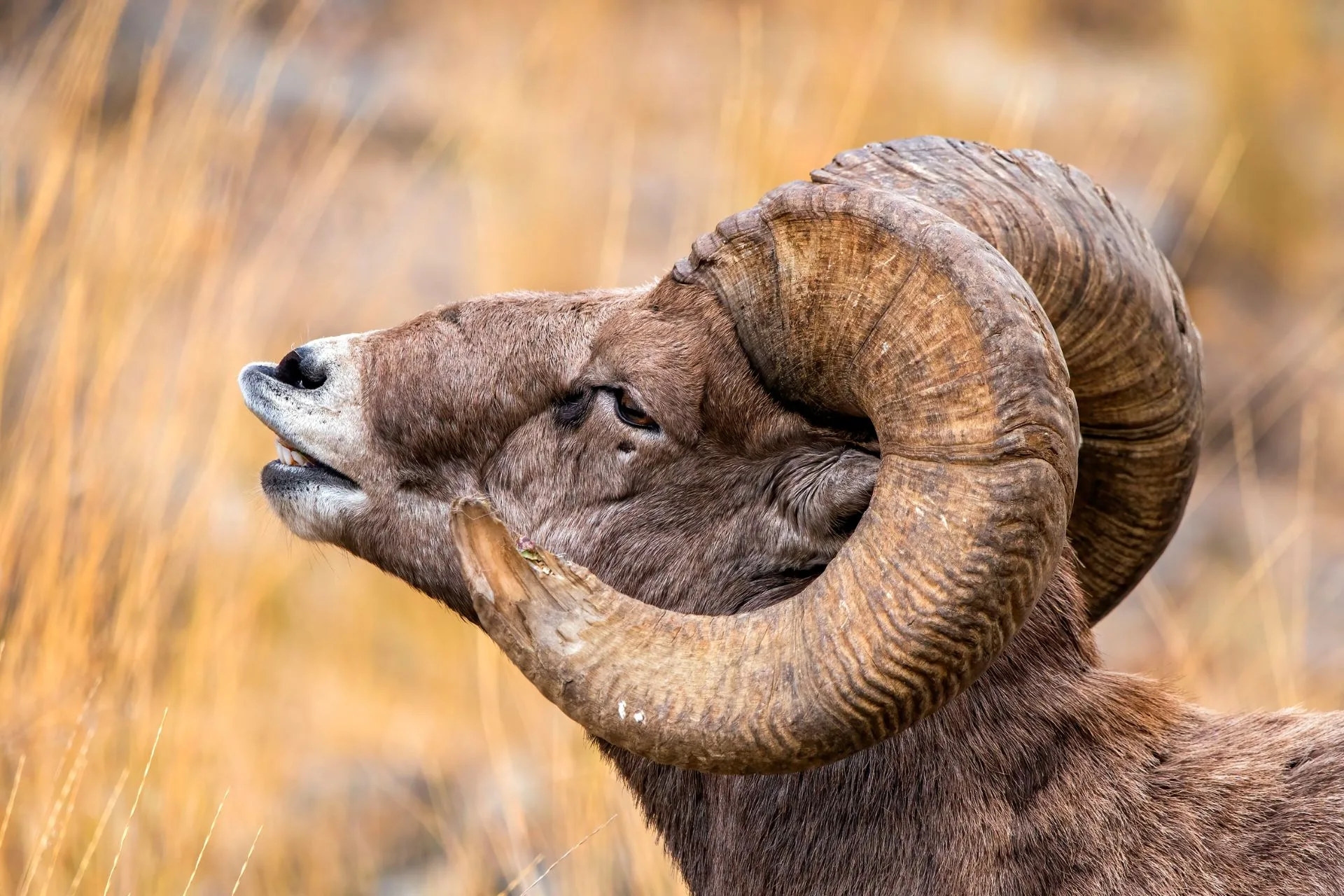BRETT FRENCH
Talk about a short hunting season: Two days after the backcountry bighorn sheep season opened Sept. 1 in the Gallatin-Yellowstone hunting district, the season was closed.
Montana Fish, Wildlife & Parks sent out a notice on Tuesday morning, Sept. 2, notifying other hunters that the quota of two legal rams had been met, including the killing of one additional ram over the quota.
So, for all of the 102 other hunters who had bought a bighorn tag for the unit, 39 of which are nonresidents, their season is over as of sunset on Sept. 3.
Last year, in the same hunting district, 58 hunters spent 275 days combing the backcountry in search of a mature ram with three bighorns shot, again one more than the quota.
In all backcountry units, the quota is two rams that must have horns that are considered a ¾ curl, with the end of the horn extending past the animal’s eye.
The slim odds of drawing
Hunting District 300, located south of Bozeman and north of Yellowstone National Park, is one of Montana’s five backcountry hunting areas where license sales are unlimited. In comparison, hunters must apply for bighorn tags in the state’s 37 other bighorn sheep hunting districts.
Successful hunters are awarded tags in these other districts through a drawing. The odds of drawing a tag in some districts is less than 1%. Those who draw an either-sex tag, even if they don’t kill a bighorn, can’t apply again for seven years.
An example of the competition for tags can be seen in Hunting District 680, which stretches across portions of Chouteau, Blaine and Phillips counties. HD 680 had more than 5,800 resident hunters apply for nine either-sex bighorn sheep tags this year. Almost 2,600 nonresidents vied for one tag in the same district, according to FWP statistics.
Statewide, 455 hunters received bighorn sheep tags out of more than 38,000 applicants. Of this total, 350 were purchased in the unlimited backcountry districts. That means only 105 tags went to hunters applying through the drawing system, eight of which went to nonresidents.
This scarcity of opportunity makes the unlimited hunting districts popular even though they are located in the rugged and remote backcountry of the Beartooth, Absaroka and Gallatin mountains of southern Montana.
The quick season in HD 300 is testament to how competitive even these unlimited tags have become. It’s a race to tag a ram before the season closes. That means hunters will spend days or weeks combing the mountains for the ram they want and then babysit them until the season opens.
At a 2023 Fish and Wildlife Commission meeting, during which changes to the unlimited districts were first proposed, veteran bighorn sheep guide Craig Neal told the commissioners that some hunters are selling GPS waypoints to where big rams can be found as well as hunt plans. He also said some hunters, after killing a ram, were waiting to report the kill to allow another hunter time to shoot a ram before the quota is registered as full.
Concern about overharvesting bighorns in the five backcountry units prompted the Fish and Wildlife Commission to implement changes to the hunts that began this season.
Hunters are now required to report their success within 24 hours, instead of 48 hours. However, they have more time to provide the cape and head for inspection to FWP – 72 hours instead of 48 – due to the difficulty of packing out of remote wildlands.
One Missouri Breaks season cancelled
Statewide, the quota for bighorn sheep harvest dropped from 129 last year to 105 this season. The decline is in part due to a season closure in HD 622, the Middle Missouri Breaks, after the herd was decimated by an outbreak of pneumonia.
Last year, five ewe and five ram tags were issued for the hunting district. Hunters filled all five of the ram tags and one ewe was shot. One of the rams tested positive for a new strain of pneumonia.
This spring, as FWP was flying to count the herd, another ram died and tested positive for the unique pneumonia strain. In 2016, the herd was estimated at 318 animals. No attempts were made to count the herd this year.
No disease detected
So it was welcome news when Region 6 wildlife biologist Scott Hemmer helicoptered over bighorn sheep in neighboring HD 680 and reported no signs of “coughing sheep or other indications of a disease outbreak in the herd.”
Since bighorn rams are known to roam, officials were concerned the disease that wiped out the Middle Missouri Breaks herd may have spread to adjoining bighorns.
HD 680 in northeastern Montana includes the Bears Paw Mountains and northern portions of the Missouri River Breaks. The district offered 30 bighorn sheep tags this year, more than any other district in the state.
Hemmer reported seeing 303 bighorns in the district during his July flights.
“The sheep numbers in the eastern subpopulation were up from last year, but still (5%) below the long-term average,” Hemmer wrote.
The long-term objective is 450 sheep for the district.
“There were more ewes and lambs along the Missouri River than last year, but still fewer than had been seen in the past,” he added.
Sixty-five rams were counted. Of this total, the subpopulation in the west was average but the eastern group was half of the average.
“Approximately 43% of the rams observed were ¾ curl or better. This was lower than average, but due in part to a higher percentage of yearling rams in the survey, which is indicative of better sheep production and recruitment last year,” Hemmer said.
“Sheep numbers in the western subpopulation were up from last year and were above the long-term average,” he added.
Little Rockies herd
To the north of the now decimated HD 622 herd is the Little Rockies bighorn population contained in HD 620. July flights by FWP biologist Jake Barnes counted 96 animals, only three of which were rams.
He reported counting may have been affected by a coyote they spotted in an area where the sheep normally hang out.
“This total represents a 16% annual increase and the maximum count of bighorn sheep within HD 620 since surveys began in 1981,” Barnes wrote.
The population objective for the district is 75 to 100 bighorns.
Barnes also noted none of the sheep showed signs of pneumonia, but the low number of rams counted prompted a discussion about whether the males have moved to new terrain. Four either-sex tags were issued for the hunting district this year.
This season, two out of 919 resident hunters drew tags for the district and one nonresident beat out more than 1,000 others for a chance to hunt the Little Rockies.
Last season, it took hunters an average of eight days to bag their Little Rockies bighorn, that’s eight times longer than hunters in the Gallatin-Yellowstone district had this year.



